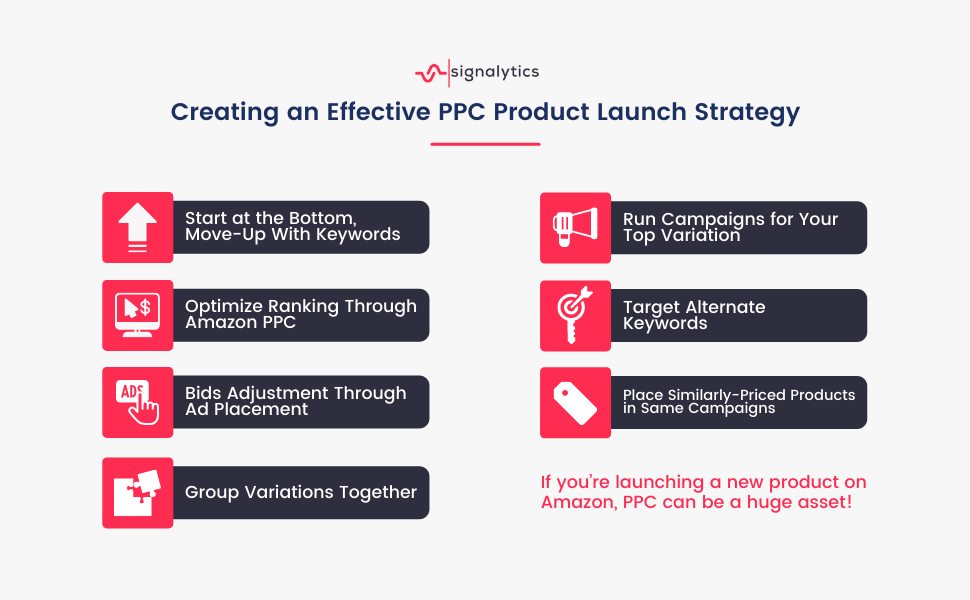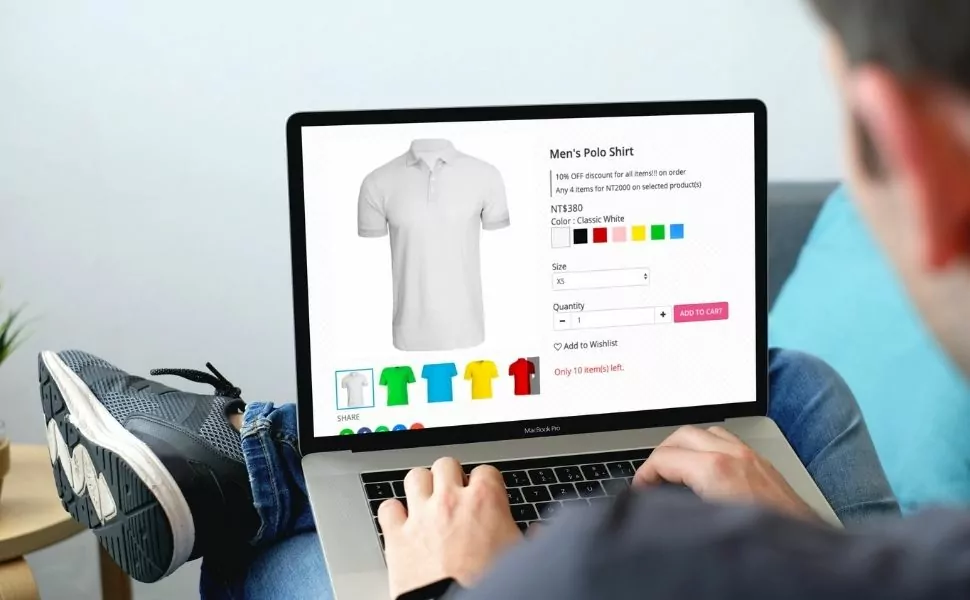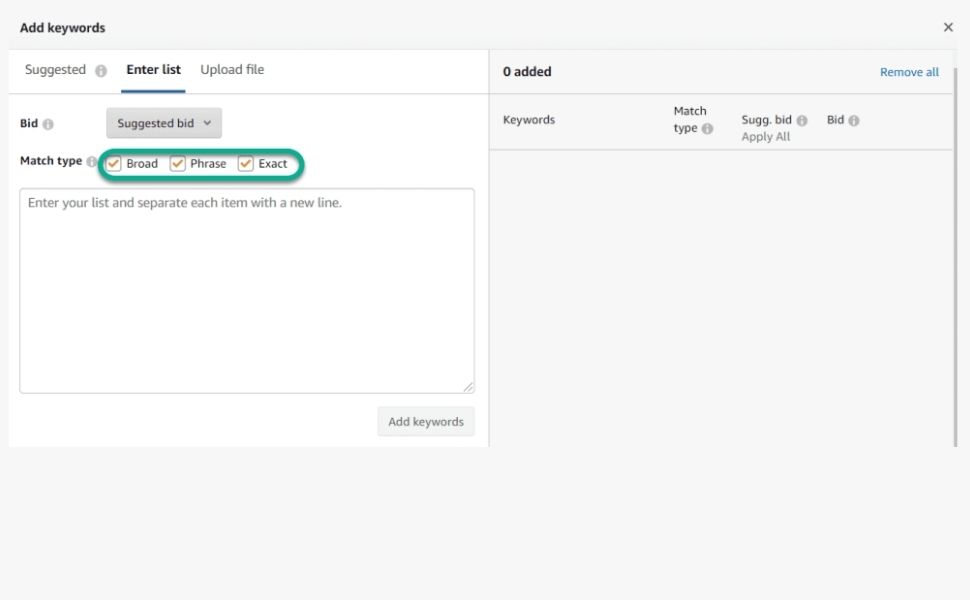Product launches are a great way to generate buzz and interest in your product or service, but PPC can help you launch even more successfully.
For starters, PPC is an acronym for pay-per-click and is arguably one of the most effective forms of advertising on the web today.
PPC ads allow advertisers to target specific audiences, which helps them reach a larger group of people with their message.
So if you’re launching a new product on Amazon, PPC can be a huge asset!
In this post, we look into what it takes to create an effective PPC product launch strategy.
Let’s dive right in.
Creating an Effective PPC Product Launch Strategy

Start at the Bottom, Move-Up With Keywords
Whether you’re a seasoned Amazon seller or a beginner, you should start your PPC campaign with long-tail keywords.
After that, you can work your way up to the more general keywords.
PPC ads are similar to search engine optimization or SEO. You want to start with long-tail keywords and then move into broader terms with higher costs per click (CPC).
Identifying which PPC strategies will be most effective for your product launch is essential because it helps maximize your PPC campaign.
The primary reason starting with long-tail keywords works is because they have a lower CPC.
That means you can get more clicks for your advertising budget. And when you’re launching a new product, it’s essential to get as many people as possible clicking on your ads!
Optimize Ranking Through Amazon PPC
Create a strategy to improve your listing’s position in search engine results pages (SERP) for a given keyword. The idea is to bid on keywords relevant to your product and have a high CPC.
There is no one-size-fits-all approach, so make sure to test different PPC strategies until you find the ones that work best for you.
Determine your bidding budget and PPC strategy based on the estimated revenue you would get from a sale.
You can use tools like Google Analytics to help determine this number, which will give you an idea of how much PPC is worth to your business (and provide insight into what keywords are most profitable).
If the listing ranks beyond page five or six on Amazon, PPC can help you move up in the SERPs.
Since PPC ads are shown above the organic results, it’s a great way to get more visibility for your product.
Bids Adjustment Through Ad Placement
These days, Amazon has a set of new functionalities to help sellers bid in PPC auctions.
This PPC strategy allows you to adjust your bid placement in a way that ensures your ad is being shown in the most relevant placements.
For example, if you’re selling a product related to fitness, you may want to adjust your bids so that your ad appears on pages where people are searching for health and fitness products.
Group Variations Together
Grouping variations together allows you to improve your product’s visibility while boosting your brand awareness efforts.
It makes perfect sense to bundle individual variations into a single package because it helps make your PPC campaign more efficient.

For instance, instead of running separate campaigns for each color variation, group all three colors into a single campaign to decrease the number of PPC ads that appear on Amazon listings while increasing brand awareness at the same time!
Run Campaigns for Your Top Variation
If you cannot combine your variations into a single package, you should run a PPC campaign for your top variation. This will ensure that your best variation gets the most traffic and clicks.
However, keep in mind that it’s important to test different PPC strategies so you can find the ones that work best for your product and business. If one strategy isn’t working, don’t be afraid to switch things up!
Target Alternate Keywords
One of the most effective ways to position your product on Amazon in a way that will generate sales lies in how you present your merchandise to your audience.
If you’re able to highlight your product’s features and benefits to potential customers, you increase the likelihood of buying your PPC.
For example, if someone is searching for a specific item on Amazon, they might not find it immediately because many similar items are also being sold on the marketplace.
However, PPC can help sellers get their PPC ads before looking for a specific product.
Another way to target alternate keywords is by using Amazon PPC’s “include and exclude” function. This will allow you to bid on certain keywords while excluding others.
For example, if you’re selling a pet toy, you might want to include “pet toys” as a keyword but exclude terms like “dog toy” and “cat toy.”
This will help ensure that your ad is only being shown to people interested in buying a pet toy.
Place Similarly-Priced Products in Same Campaigns
Picture this; you have similar products on Amazon listed as different ASINs – A, B, C priced at $10, $15, and $50, respectively.
On top of that, you’re running a Sponsored Products campaign with these product bundles in the same ad group.
Your daily budget is $5 for each product.
In such a scenario, your Advertising Cost of Sales (ACoS) will be as follows:
- Product A: 50%
- Product B: 33.3%
- Product C: 10%
From the above example, product C has the lowest ACoS. Still, the overall group ACos works to around 31% because of product A and B’s high advertising cost of sales.
Now, assume that products A and B are in the same ad group, and C is in a different one.
In such a scenario, the ACoS of product C will not be affected by the other two items.
The point is, you’re like to achieve more success with your PPC campaign if you bundle products with the same ad in one group.
Structure Campaigns Based on Product Performance
In most cases, Amazon sellers create ad campaigns based on the performance of their keywords. If a keyword is converting well, it will be added to an ad group. However, PPC campaigns can also be structured according to product performance.
This is achieved by creating PPC ads for the top-performing products and then adding those items into a campaign that targets the best keywords from your PPC research efforts.
In addition, it makes sense to have separate PPC campaigns for all your products. This will allow you to track the performance of each product and make changes (or optimizations) as needed.
It’s also important to note that PPC campaigns should be structured based only on what’s working. If a keyword or product isn’t performing well, it should be removed from the campaign.
Remember, PPC is all about testing and tweaking different strategies until you find what works best for your business. So don’t be afraid to experiment!
Target Self Products Through Product Targeting
When PPC product ads are created, Amazon allows sellers to target their own products through Product Targeting.

This function is available for Sponsored Products and Headline Search Ads campaigns.
Product targeting can be used in conjunction with manual targeting by allowing sellers to specify which products they want their ad campaign to target.
In order to use product targeting, sellers must provide the ASINs of the products they want to target.
This function is a great way to ensure that your PPC ads are being shown to people interested in buying your products.
Target Products That Appear in Google Ads
One of the best PPC strategies is to target products that are also being advertised on Google.
This can be accomplished by creating PPC ads for your top-performing keywords and targeting users who have recently searched for a similar product or service on Google Ads.
Since these users were looking at other PPC ads, there’s a good chance they’ll opt-in when they see your PPC product ad.
Gauge the Buying Behaviour of Your Audience
One of the most important elements that make prospects click your ads is understanding your target audience. Once you know the demographic you’re after, you can drill down to understand how they behave.
Knowing this will allow PPC sellers to fine-tune their PPC product ads by targeting relevant keywords, similar products, and ad copy better suited for them.
For example, if your audience consists of men looking for an aftershave balm, it would make sense to include keywords such as “aftershave balm,” “men’s grooming,” and so on in your PPC ad campaign.
In the same vein, if you’re targeting women looking for a new dress, it would be wise to use keywords such as “dresses,” “women’s fashion,” and so on.
Experiment with Different Match Types and Bid Amounts
Apart from experimenting with your PPC campaign timings, you should consider playing with bid amounts and match types. The fact is cost-per-click for a specific keyword in an automatic campaign will fluctuate based on the BID prices of other PPC sellers.

However, if you’re running PPC ads with manual targeting, it’s important to experiment with different match types and keyword matches to find what works best for your business. This will allow PPC marketers to bid more or less depending on how competitive a specific keyword is.
It’s also important to test different bid prices for a keyword. PPC sellers should consider setting their bids at the suggested bid price, above or below the suggested bid price.
By doing this, PPC sellers can find out how much they’re willing to pay for a click and see if they’re getting a good return on investment.
Drive Sales Through New-to-Brand Metrics
One of PPC’s best features is how it can help drive sales by showing ads to new customers.
Remember that PPC campaigns should have a direct impact on your bottom line, and PPC sellers who are looking at metrics other than just CTR will be able to determine if their PPC strategies are working or not.
When optimizing your product ads, you should also look at PPC metrics such as PPL, PPS, and ROI.
In fact, if you have a high PPL but low CTR or low PAP (per acquisition), then it might be time to bid higher for that keyword and lower the bid on other keywords since they’re not converting.
Further, if you have enrolled your brand with Amazon Brand Registry, you can leverage sponsored ads. The beauty of it is that you can customize your ads to fit your headlines and products. These ads are useful in driving sales and can also help PPC sellers get more brand exposure.
You can also gauge orders and sales using PPC’s new-to-brand metrics. You can do this by checking how many sales came from PPC ads and the number of orders that resulted in a customer who had never purchased anything off your brand before.
Craft the Perfect PPC Product Launch Strategy
Indeed, those are many tidbits to process. However, building a successful PPC product launch strategy that will bring you the results you’re hoping for isn’t easy.
Fortunately, with the information provided here, you’re on the right path to creating a great PPC product launch strategy.
If you have any concerns, do not hesitate to reach out to our team here at Signalytics so we can work to create the product launch strategy that will work for you.

